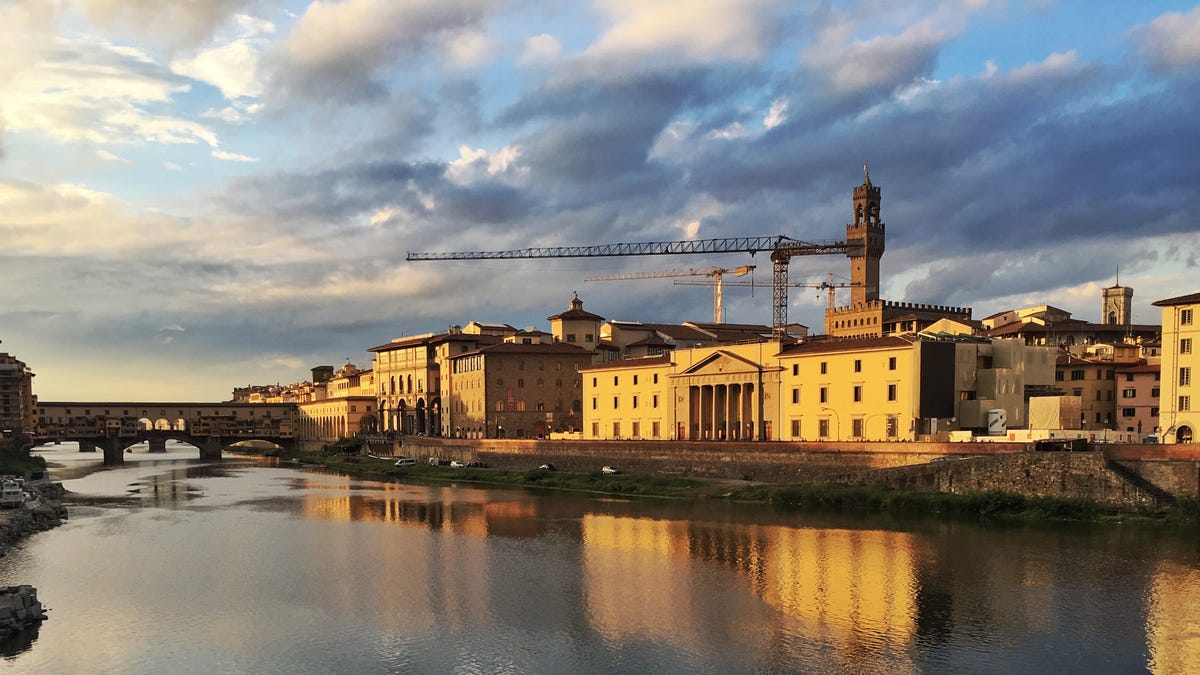'Inferno' director Ron Howard talks drones, Dante, Dan Brown
CNET asks Ron Howard: Are tech entrepreneurs the Dantes of today?

Dante Alighieri's influential poem "Inferno" defines our modern understanding of hell and has been interpreted, reinterpreted and repurposed by numerous artists since it was written in the 14th century.
The latest artist to take on this somewhat intimidating text is director and actor Ron Howard, who has just turned Dan Brown's best-selling thriller "Inferno" into a movie set primarily in Dante's hometown of Florence, Italy. Just like the previous Dan Brown adaptations, "Inferno" stars Tom Hanks as brainy art history professor Robert Langdon and introduces Felicity Jones as the equally brainy Doctor Sienna Brooks.
The film, which will be released Friday in the US, drags Dante's poem kicking and screaming -- quite literally in the case of some of the hellish visions we see -- into the modern day.
Director Ron Howard poses with actors Felicity Jones and Tom Hanks at a publicity event for "Inferno" in London this month.
Thanks to the presence of villainous biomedical entrepreneur Bertrand Zobrist, played by Ben Foster, the film can't help but draw parallels between the artists of the Renaissance and the tech entrepreneurs of the 21st century, each as the big thinkers of the day. The character, like Dante, is a passionate philosopher tied deeply to his convictions.
Fortunately, in the real world, powerful tech leaders like Bill Gates and Mark Zuckerberg are more focused on curing disease and preventing death than spreading disease and killing people. This is not the case in the film, though, with Zobrist trying to solve what he sees as the scourge of humanity -- overpopulation.
Speaking to CNET in Florence, Howard said he was inspired to give Zobrist a stage to put forward his views on overpopulation, which he said were influenced by Jason Silva's web series "Shots of Awe" and TED talks he had seen.
"I actually got Jason to take a look at the speech and he and his editor did kind of a rough pass at what the scene might be," Howard said. "Ben made the character very, very personal. And it's very exciting to see those scenes where Zobrist is presenting a very logical argument brought to life."
Perhaps the most thrilling part of the film, though, is a chase that takes place through Florence's Boboli Gardens, in which a drone is searching for Hanks and Jones as they attempt to shake the police and find their way into the Palazzo Vecchio.
The scene took days to shoot, according to Jones and Hanks. "Occasionally I had to go back into the Boboli Gardens and run away from drones that were not there," said Hanks, who was also in Florence publicizing the movie. But it was not just filming the chase that was tricky. The crew also had to film the drone that was conducting the chase -- something that often required two drones.
"It was my first time really being around the drones, and dealing with them," Howard said. "There were times when we simply couldn't shoot with a drone in the shot. So we would use the drone to shoot the shot and then digitally put in a drone."
It's clever camera work, but Howard credits Brown with the high-tech vision for the scene. "He brings absolute cutting-edge modernity into conflict in a way with history and I think it's kind of epitomized in that drone sequence," he said.

